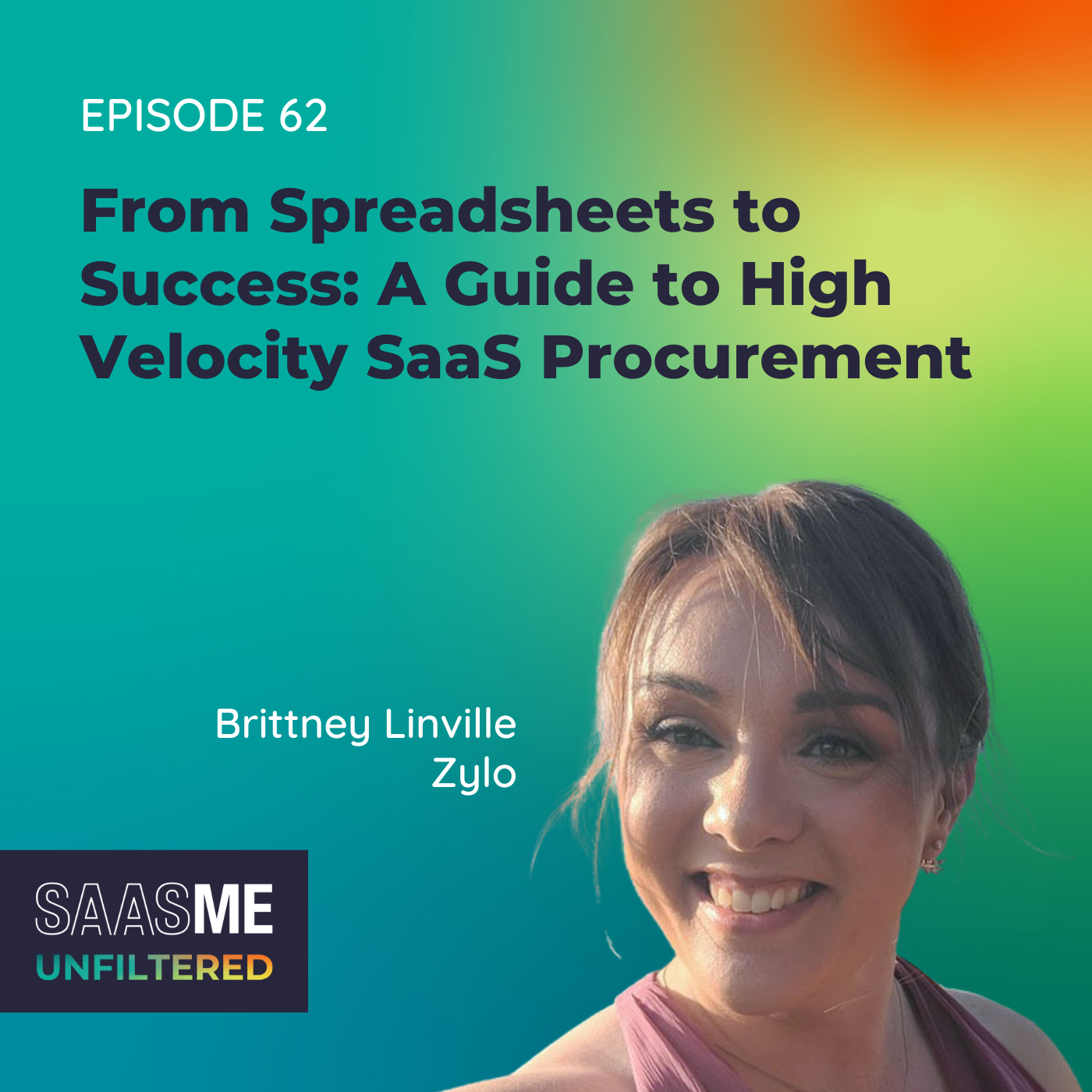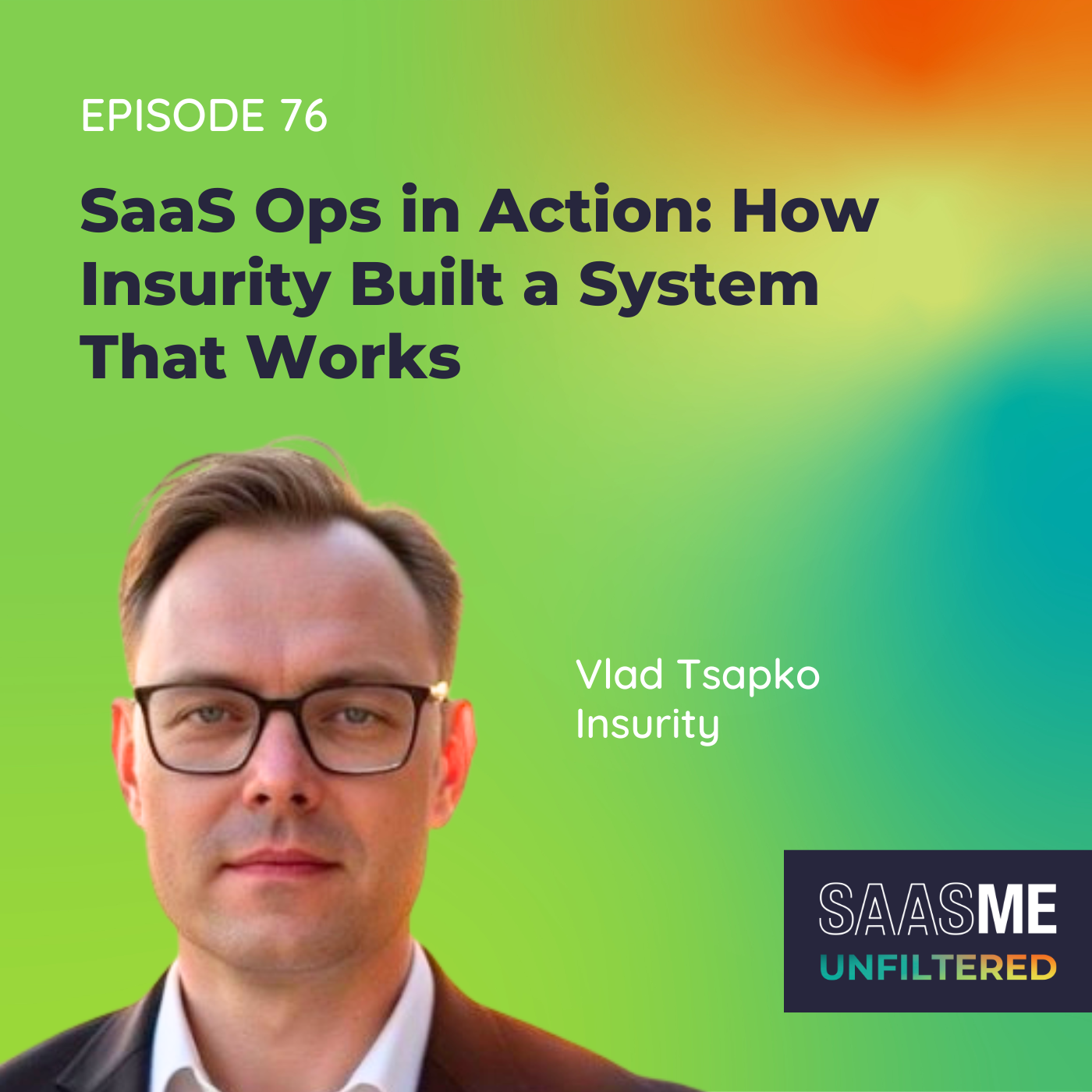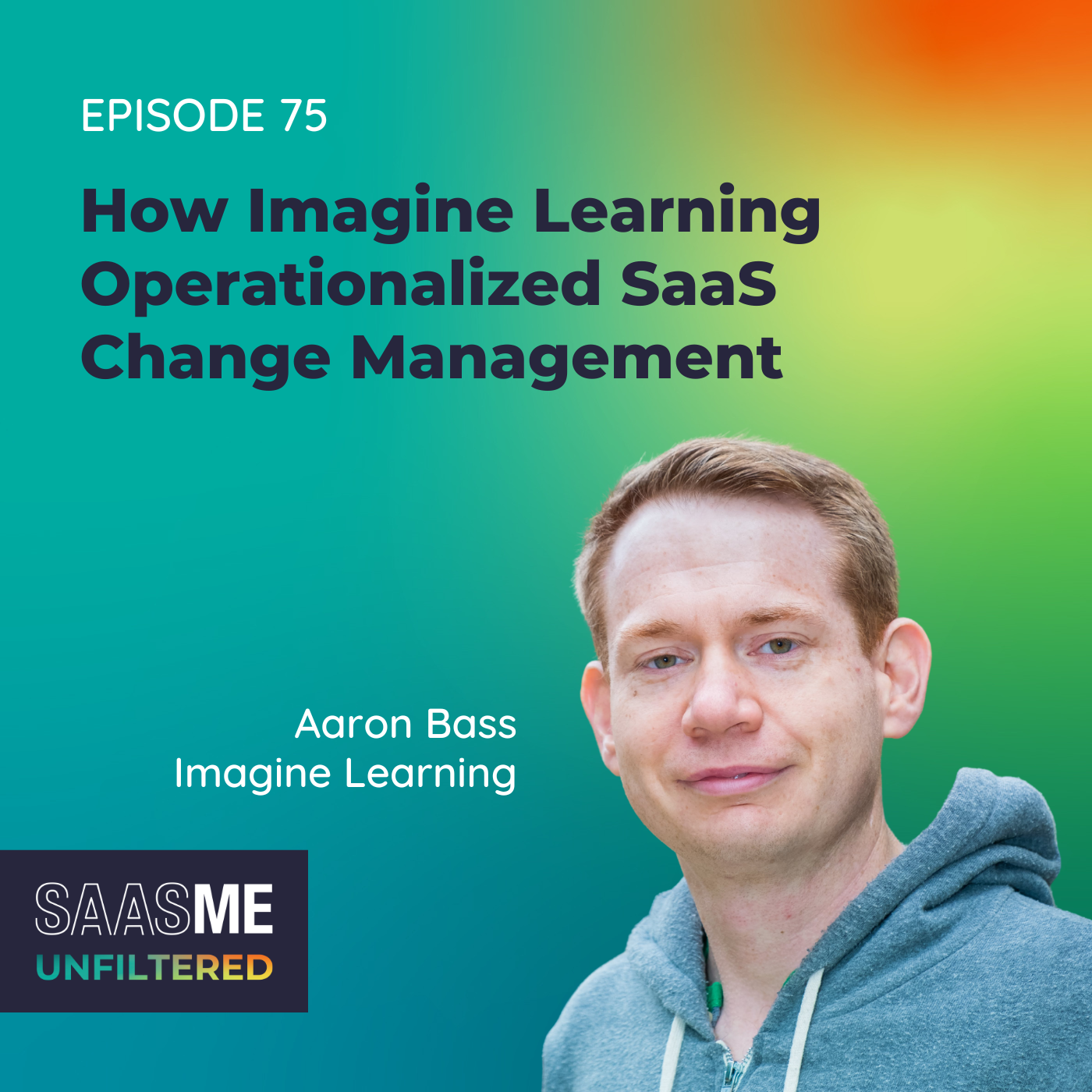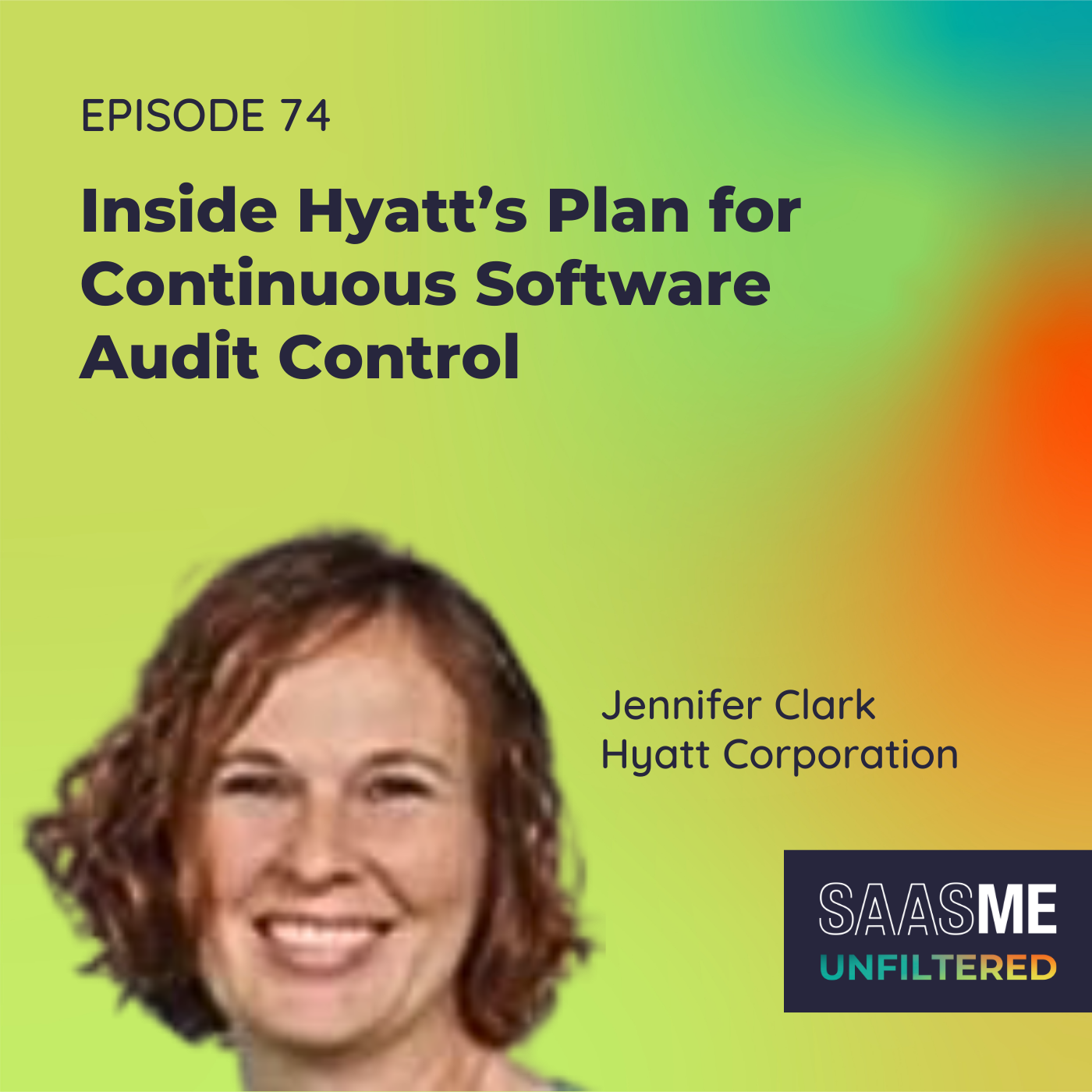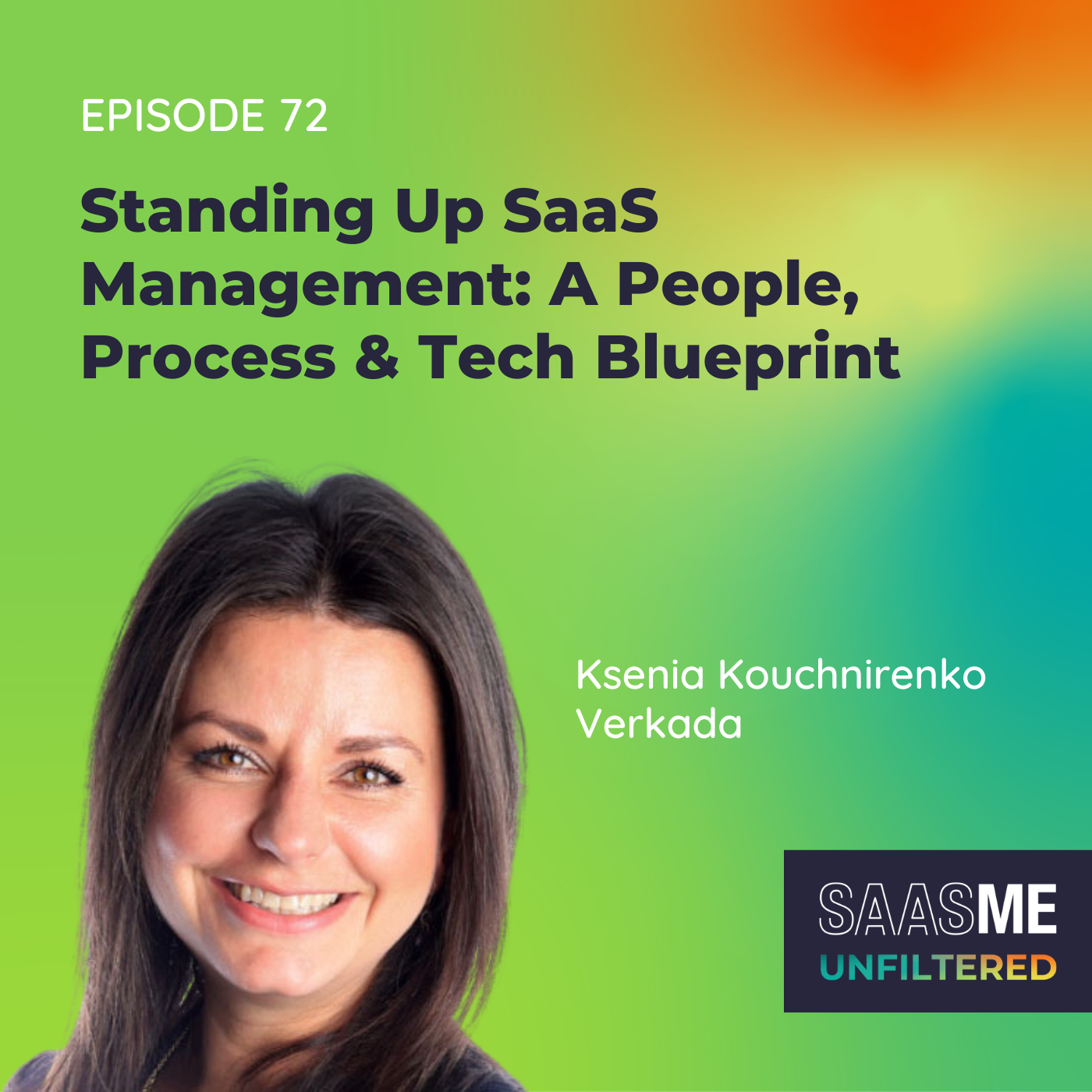From Spreadsheets to Success: A Guide to High-Velocity SaaS Procurement with Brittney Linville (Zylo)
- 0.5
- 1
- 1.25
- 1.5
- 1.75
- 2
Brittney Linville: I remember walking into one role leading procurement and building it up, and they're like, " Welcome, we're so glad to have you. Welcome to your first week. Our Salesforce renewal is due next week." And if any of you have gone through a Salesforce renewal, it's like, that's not something you do in a week. But that was the situation I walked into.
Cory Wheeler: Hello, hello and welcome to SaaSMe Unfiltered, The SaaS Management Podcast, the show with give it to you straight, real- life advice from pros knee- deep in SaaS every single day, SaaS management superheroes just like you.
Cory Wheeler: We are thrilled to have a very exceptional leader joining us today on the podcast. Her career spans from serving in the US Army to being a procurement officer in government agencies, and she's built strong expertise in legal procurement and compliance at high- growth SaaS firms. She's an advocate for fellow veterans with a passion for helping them succeed after the military and overcoming challenges around their injuries or disabilities. She's also an entrepreneur owning several of her own businesses. She is actually a former customer of Zylo, and she loved Zylo so much that she joined the team as a strategic account executives to help other customers develop tailored strategies to optimize their SaaS management processes and to support them along their SaaS management journey. Wow. Welcome to the show, Brittney Linville. How are you?
Brittney Linville: I am wonderful. Man, I hear all of that and I'm like, when do I sleep? But I do, and I get my eight hours a night too. So glad to be on the podcast with you guys.
Meredith Albertson: Brittney, we are super excited to have you on the show today to dive a little bit more into the thinking and the strategy around being a procurement professional. And being in that profession, I have to imagine, we hear this a lot, renewals are constantly that thing that's hanging over your head and it's top of mind. And we find that companies have hundreds and sometimes hundreds and hundreds of renewals to face a year, and it is just so much to keep up with. But Brittney, you have been able to form this strategy to attack renewals with high- velocity and really drive amazing business outcomes. So really excited today to talk a little bit about and learn more about how you've been able to do that and hopefully, have you share a little bit of your secret sauce with our listeners and help them get better in some of their processes and strategies. Today we'd like to start talking a little bit about procurement and the CIO relationship. Throughout your career, you've done this so well, how have you really been able to elevate your role in procurement to really think about being that strategic partner to the CIO or whoever the leader of IT is in your organization? In doing so, did you find that, that opened up new doors for you in the business?
Brittney Linville: Yeah. Well, I think just building those relationships is something that you have to do when you're in procurement, because at the end of the day, you're existing to help other people acquire the things that they need to do their job effectively. And so for me, very early on, I didn't know what I was buying. I had no clue. I was very lost with what things were. And in order for me to be effective in order to buy these things and get a good deal for the companies I worked for, I needed to understand what they were. So a key partner of mine was the CIO relationship. They typically buy a ton of SaaS. But I also don't want to overlook the CTO, your chief technology officer, because you've got your CIO really powering those applications that the companies use internally, but then your CTO, especially my experience working in SaaS companies, you're buying SaaS that you're then packaging into the application that you sell to your customers. So it's just as important to understand what do they need in order to build those apps because if they can't do it successfully, I don't have a job either. So it's really building those relationships and understanding what are they buying, what is it used for, and then getting in their brains a little bit as well. Great example, being with CTOs, you're going to have tons and tons of developer tools that they're using. Well, what's the difference between one versus the other? It's only by building those relationships and talking to those people that you can understand how the picture comes together and what they need and why?
Cory Wheeler: Brittney, I love that concept, and I want to ask a quick question on the CTO, CIO conversation. When you're looking at a CIO, they're buying apps that are used company- wide, they're buying those birthright apps, they're provisioning and de- provisioning and making sure that the full life cycle is taken care of for those products, but they have a view of the whole company, whereas the CTO really has a view of their own internal org and cost of goods and everything that goes into building and maintaining the product. So from a CIO perspective, that governance can become more of a partnership in the CTO, the security and the compliance around those solutions if they're attached to your product or used as part of the product or a sub- processor, I would think that, that would be their lean. Is that what you've seen in your experience? Or maybe talk a little bit about the differences between the two and where their focus areas are.
Brittney Linville: Yeah, I typically have seen in my career where the CTO is really given a bit more leeway in operating within the company's structure and security practices to bring in the apps that help them build and deliver a best in breed application that they're selling to their customers. So as long as they're falling in line with those security, privacy, legal requirements that the CIO is going to have for things that come in onboard, but the CTO is also going to have more rigor because now you're buying applications that are sub- processors of your application. And so if you were to ask procurement Brittney 10 years ago, what's a sub- processor? I'd be like, good question. But I became intellectually curious over time as things like GDPR, CCPA, COPA, various privacy regulations. I was fortunate enough to be able to spend some time in compliance and take those opportunities to learn and grow and just be intellectually curious to dive deep into why these things matter, because at the end of the day, they impact what you're buying. If you're going through the process to acquire an app that's a sub- processor, you're going to need much more rigor in working with your legal team on your DPA. You're going to need much more rigor with your security team and that relationship there around their security practices and certifications. And I wanted to be able to walk into those conversations and feel like I could carry my own and follow those conversations. And so it was really learning from those leaders, learning from people that are in those teams and understanding what these applications are and why they matter that helped me be successful in crushing all of those app renewals.
Cory Wheeler: That's right. There's a lot of them.
Meredith Albertson: Brittney, I love that phrase, intellectually curious, and I think you've used it to really build credibility across the organization with other leaders. You mentioned just a couple of things there about talking to your peers, talking to some of those leaders, are there other ways that listeners could... if they want to start to be more intellectually curious in their business and do the same things that you have, what are some of the other things that... other tactics and tips that you might suggest?
Brittney Linville: Definitely from the procurement sphere, it's going and working with those key partners across the organization that maybe budget owners. You're going to have somebody that's got to rationalize all the apps that they're looking to purchase every year, and they're going to be really detailed on what that app is, why they need it, who needs it within the organization, and they're going to understand the value that it brings to the company. So it's just getting outside of your normal space and spending time with those people to learn why those things are important. I sat in on tons of calls and just as a ride along and to learn when the FP& A people were meeting with those budget owners and doing their budget versus actual conversations. And I found those incredibly beneficial because not only am I hearing the dollars and cents, things they care about there, but it really got detailed as to how they're budgeting for things, how they're forecasting for things, and it helped me get ahead of renewals and of expansion and things as well.
Meredith Albertson: Awesome. Great tips there.
Cory Wheeler: Yes. Well, you've got these wonderful tips because you have done this three separate times. You've built out procurement in three organizations, and in all of those, you had to focus on what is emerging as the top procurement category in the indirect space that requires the most effort, gets the most return, operationalizes business, which is software as a service. So talk to me as you built those three procurement organizations before you had a platform in place, what were your processes? How did you get your arms around software? How did you own it, because in procurement, making sure spend under management and negotiations are being executed at all times are of the highest priority? How did you do this?
Brittney Linville: Oh, man. Oftentimes, when you're building procurement from the ground up, you're walking into the door and you're in spreadsheet hell. One person's got this spreadsheet, somebody else has this spreadsheet, somebody else has a list of random stuff that they have on their G Drive, and you're trying to make sense of it. And then you've got a big old folder full of contracts and people are like, " Oh, here's all of our contracts. Go ahead and sift through those and find out when they renew." And that's the experience for so many procurement people out there. I know some people probably listening to this are like, yes, and that was my experience in these separate organizations. It's disparate data all across the organization and you're trying to make sense of it and figure out what's going on because the last thing you want to do is auto renew. You don't want to be the procurement person that misses a renewal. I mean, there was one situation where I had the IT team had their spreadsheet, and then you had the revenue function that had their spreadsheet as well, and they didn't trust their spreadsheet, and this person didn't trust the other person's spreadsheets. And so they were like, this is my spreadsheet. And it was about how do you start working with them to see what's the data that they care about, why are they keeping a spreadsheet to begin with? And then start letting them know that you're there to be that person that they can trust. Take those duties off their plate, give them that time back to go and pursue the things that they're important for, because being the first procurement person, often, you're replacing somebody else's other duties as assigned. Well, being able to lean in with them and take that off their plate and earn trust and credibility with them, start with their spreadsheets, but then build that out over time to bring it to more of a best in breed process.
Cory Wheeler: So you really are just building the plane while you're flying it, trying to get an inventory and understand the entire operation while you're jumping immediately into renewals and keeping great records because you know this will be back up in another year or so. Is that about accurate?
Brittney Linville: Oh, yeah. I remember walking into one role leading procurement and building it up, and they're like, " Welcome. We're so glad to have you. Welcome to your first week. Our Salesforce renewal is due next week." And if-
Meredith Albertson: Wow.
Brittney Linville: ...any of you have gone through a Salesforce renewal, it's like-
Cory Wheeler: Six months.
Brittney Linville: ...that's not something you do in a week. But that was the situation I walked into. Fortunately, for me, I had experience with Salesforce and knew what it was, but it was very much like a, okay, glad to be here. Let's make an impact, so.
Meredith Albertson: So much for onboarding.
Brittney Linville: I know, right? Welcome. First day. Have fun. I mean, at least it's better than getting an Oracle audit on your first day though.
Cory Wheeler: There you go.
Meredith Albertson: Brittney, single source of truth or system of record, however you'd like to describe it, is often seen as this tactical initiative, but you have really been able to shift that perspective and make it seem as really a strategic initiative. Did you know that you were going to be doing that and building that in a SaaS management platform, the business processes that, that would start to affect? Or was it really that first step, that first focus was just really building out that system of record and understanding what that was going to open up to you and the business?
Brittney Linville: I think, for me, we just talked about having those spreadsheets and trying to go from that to making my day make sense was really what was in my mind, is I have all this inbound information, how can I organize it? I got this system over here, I got this data over there, and so it wasn't ever that I was seeking a single source of truth, because nobody's ever going to want to use an application just because I say so. They want to work where they work, I need to work where I work, but I need to be effective in my day- to- day business. And so I was really looking at building my table of contents, because great example of it, working in procurement, you're often interfacing with legal. They're going to have a CLM that they're doing their redlining, they're doing their negotiations. That's never going to be in a single source of truth system that I have. But I needed to know, hey, this app, when it renews, where's that contract workflow happening? And so I was looking at Zylo as like, give me a table of contents. My security people are working in this app over here. My legal people are working in this app over here, several other apps and everything happening as well, but give me that table of contents, or some people call it a single pane of glass, where I can start somewhere and then branch out. I can pull information in through integrations and other stuff, but give me a place to start and then I can start jumping off into other platforms if I need to go one click deeper.
Meredith Albertson: Brittney, I know you're a swifty, and so I have to take an opportunity to say, it sounds like you might have some bad blood with spreadsheets.
Brittney Linville: I like what you did there. I see you. Yes, absolutely. It was just like the cake in the music video that she just like, stab the-
Meredith Albertson: Slashes and pulls apart.
Brittney Linville: That's how I feel about managing SaaS and spreadsheets. You just need to murder them. They're no good. They're not going to serve you long- term. As soon as you hit enter on a field, it is now out of date. So yes, had some bad blood with the spreadsheets and just needed to get rid of them. SaaS management at scale is not going to happen in a spreadsheet. You've got to get something more robust to help you out.
Cory Wheeler: Very insightful. I can't claim to have followed all of that conversation, but I want to pick up on that.
Speaker X: If you are not unlocking the full value of your SaaS, what are you doing? There is no denying it, SaaS is mission- critical to your company's growth and success. And as the number two operating expense for most organizations, it's your biggest opportunity to save money and drive efficiency. The time is now to do something about it. Join me and your fellow IT, Sam, finance and procurement leaders at SaaSMe. SaaSMe is the industry's only dedicated SaaS management event where you can sharpen your skills, hear from your peers, and learn how to unlock value and responsible business growth through Smarter SaaS Management. Register today at saasme. com. That's S- A-A- S- M- E. com.
Cory Wheeler: So you mentioned scaling procurement organizations, in your last role prior to coming over to Zylo, I described your procurement organization as high- velocity procurement. You had hundreds and hundreds of renewals that were due more than one every business day, I think is how you've positioned that to us. You were a team of one. So how in the heck were you able to build high- velocity procurement across a variety of categories with one of those categories requiring, typically, more than one resource in and of itself? How did you keep pace with all of that and manage all of the volume while having a family, imagine that, and everything outside of work? You had that really going well. Maybe talk through what that build looked like and how you were able to get that kind of scale with so few resources.
Brittney Linville: Well, first and foremost, I am a unicorn. No, I'm kidding. I think, for me, it is really... I looked at it one day and there were more renewals for me to manage than there were days in the year. And so it's really about determining, there's no way that one person can feasibly handle this alone. And so it's really about building your team, building my bad blood swifty music video crew, and bringing in other people to help me manage this together, and working with those app owners, building those relationships and helping them help me by seeing, is there information that I can gather from them that's going to help me move these things faster? And you can also look at it from a mathematical perspective. You're divvying out the work. You're like, I have this number of renewals. There's this many that are coming up in this many days, but ultimately, you can't predict the amount of time it's going to take. I talked about that Salesforce renewal when I came in. I've had Salesforce renewals that take six months, and I've also had ones that take six days because you're just that prepared when it comes down to the renewal. So it's not necessarily that you can predict it based on the size of the contract or how many licenses you have because then a vendor can throw you for a loop and say, oh, we've redone our pricing model. So it's always something where I looked at it this way, I sat and was thinking about it one day, and I was like, I wonder how many accounts our salespeople manage. How many renewals do I have versus how many people are in our sales organization and how they manage it. And procurement people are often taking on such a heavy load, and you're often having more renewals there. So really, the only way that you can manage it effectively is to make it a team sport, bring in a crew of people, start working with your app owners and seeing what they can do to help you. And then on the flip side, you're helping them save money. So the more that you can work together, the more effective it's going to be over time.
Cory Wheeler: Yeah, you did a wonderful job of that. You always have. That's wonderful insight. I think too often, people go straight to headcount rather than relationship building, automation and all of the wonderful types of procurement tactics and strategies that are executed.
Brittney Linville: You can add more headcount but how are you going to use that headcount effectively? There's great ways to help with intake to procure, and making things more streamlined where you're not only helping yourself with how long it's going to take on renewals, but you're also looking at how do you make it more effective to get information from your users upfront? And so I think another key strategy that I had too was when I need to initiate a renewal, when I need to kick something off with my app owners, how do I make it easy for them to do that and also get me and my counterparts in negotiation, my legal teams, my security teams, my privacy teams, how can we make it easy for them to come in the door, give us the core info we need quickly and easily and accurately, and then allow us to go off and execute? So it was really just building out a combination of tooling and asking the right questions at the right time that allowed us to really just power through those renewals.
Meredith Albertson: Brittney, you've not only done this great job of building this high- velocity program using team members and making it a team sport, we've also done that with your tech stack to really help support those motions as well. And I know everyone loves to hear about what does your tech stack look like? It's like that little bit of a peak under the hood, and I'd love for you to walk through what your tech stack as a procurement leader looked like, and what was your renewal flow when you were leading procurement? How did that really work together?
Brittney Linville: I would say I've used so many different things throughout my career because so many different companies want different things. And then I even, at one point, working in a federal agency, had an AS/ 400 based system, like the black screen with the green, and you're hitting F3, F4.
Cory Wheeler: Oh, yeah.
Brittney Linville: So I've been from that realm to best in breed modern systems. And I can say the most effective way that I've built it was I had an excellent enterprise applications manager in my prior role, and we really built out a great flow that our requesters started in Coupa with the guided buying flows that they have. We built a little bit of our own guided buying, and then it was awesome to see Coupa roll that out as well. But then we integrated Coupa, and then our team used Ironclad as the CLM. And so there was the direct integration between those two. And what that allowed us to do is our intake process to start a purchase request, four questions to our requesters, four. That's it. That's how you get the process started. And then from there, we started driving logic behind the scenes based on what they were answering. Then we flow over into Ironclad, and now we're in the space where we're asking conditional questions. If you're buying a box of paper, I don't need a DPA. And so it's about building your flows and your processes to recognize when you do and when you don't need certain things. And it really helped make our users happier, our app owners, our requesters happier, because they didn't have to fill out 900 questions, 850 of them which were irrelevant to what they were trying to buy. And so it was really about putting ourselves in their shoes, about helping them have an easier process to do the right thing.
Meredith Albertson: Is that what got you started partnering with your enterprise applications partner? What got you guys thinking about building this out? Did something happen? Was there a moment?
Brittney Linville: Oh, man. I mean, procurement people out there, I know you feel me on this. Have you ever been told your processes suck? They take too long? When I do it right, it's like a black hole? I mean, that was the feedback we had, is everything takes too long, and I just need to get this done. I just need this app. I just need to be able to do my job. And so you've really got to take that to heart. When you make it hard for your people to do the right thing, you encourage them to do the wrong thing. That's how you end up with shadow IT. That's how you end up being excluded from the process. So really put yourself in their shoes and say, how can I make this a better experience? And I really had to dive deep and learn the tooling that we had and learn what it was capable of and really push the limits. And one of the things that I did is I spent a ton of time with the product team over at Ironclad. And so as they were rolling out new features, as they were rolling out new things that we could take advantage of, it wasn't just looking at them as a supplier on the other side of the table that I need to negotiate against. It was about looking at them as a partner. We bought your tool for a reason, let's accelerate how we use it to make life easier. And that was really what I invested a lot of time in. And then once we got that deployed to people, they were like, " Wow, this is so much easier. This is so much faster. I can anticipate when my stuff is going to be done now. I have visibility into my status. I know where I'm at and what's next." It was about helping people think that we sucked less.
Cory Wheeler: I love that. A lot of logos have been out there around procurement technology and slogans, I should say, that are, make procurement better, make it suck less. It reminds me of the expense reports system, " Expense reports that don't suck." So I love that thought process and that theory because procurement is so process- driven and everybody across the company has to use it. And if it's not that intuitive process that makes things easy, you're right. The path of least resistance will be taken, even if it includes going outside of policy.
Brittney Linville: Yeah.
Cory Wheeler: We are wrapping this one up, but we love to get a little bit sassy at the end of the episode. So I'm going to ask you two questions, personally and from a business perspective, what are your favorite SaaS applications out there?
Brittney Linville: Oh, man. Personally, Canva is my favorite SaaS application out there. They are really changing the game, democratizing design, but also keeping your brand identity consistent. And I've got some small businesses, and I don't know how to use Photoshop. That is way far and above my skillset. But I can make some super awesome graphics in Canva really quickly. So definitely, from a personal perspective, love Canva. From a business perspective, I would say my procurement heart and supporting legal teams, my favorite app has to still remain Ironclad. They are just so innovative in the contract lifecycle management space. The way that they can detect if a clause exists in a contract or not, the way that they can scan that document and say, hey, these are my renewal terms, or, hey, somebody sent this back to you and didn't mark their red lines, it's just so incredibly creative what they've been doing and how they've been growing.
Cory Wheeler: Brittney, thank you so much for coming on to the show. Your experience, walking through the importance of the CIO relationship and CTO, don't forget that one. Sharing some of the early stage strategies that you rolled out in three separate procurement builds, or building out that system of record, high- velocity procurement, all of these things, you are a true procurement pro, and turning that focus toward something like SaaS management, which is so core to procurement. Not only that, but now sharing your experience and empathy with our customers that are embarking on a new journey around SaaS management and getting major value is really amazing. So I want to thank you for joining the show today and for all of your experiences that you've shared. Thank you so much, Brittney.
Brittney Linville: Well, thank you for having me. It's been a pleasure to be on with you guys.
Cory Wheeler: Did you enjoy the episode? Pass it along to your friends, subscribe to get notifications for the latest episode, share your favorite takeaways, and join the conversation on social media using# SaaSMeUnfiltered.
DESCRIPTION
With hundreds of SaaS renewals a year, each with their own complexities, Procurement has its work cut out for them. But that didn't stop Brittney Linville, a tenacious and growth-minded U.S. Army veteran and procurement leader. In fact, she has not only built three procurement organizations from the ground up, but she created the gold standard for how to do it. From ditching spreadsheets and building strategic partnerships to streamlining procurement processes, Brittney dishes on how she executed at high velocity.
Key Takeaways
- Building Strategic Partnerships: Brittney Linville emphasizes the importance of building relationships with key stakeholders, such as CIOs and CTOs, to understand their needs and align procurement strategies with organizational goals.
- Elevating Procurement: Linville discusses how she elevated the role of procurement to become a strategic partner by focusing on understanding the technology landscape, including SaaS, and aligning procurement processes with business objectives.
- High-Velocity Procurement: Despite being a team of one, Linville successfully managed hundreds of renewals by building a collaborative approach, leveraging technology integrations, and streamlining processes to increase efficiency.
- Tech Stack Optimization: Linville's tech stack included tools like Coupa for guided buying flows, Ironclad for contract lifecycle management, and Zylo for SaaS management. She emphasizes the importance of selecting tools that streamline processes and enhance user experience.
- Making Procurement Easier: Linville's approach focused on simplifying procurement processes to make them more user-friendly and efficient, reducing friction and encouraging compliance while minimizing the risk of shadow IT.
- Personal and Business Favorites: Linville's favorite personal SaaS application is Canva for its user-friendly design capabilities, while her preferred business app is Ironclad for its innovation in contract lifecycle management.
Today's Host

Ben Pippenger
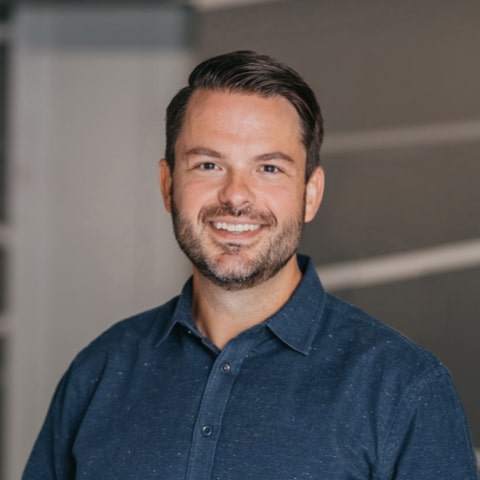
Cory Wheeler

Meredith Albertson
Today's Guests


